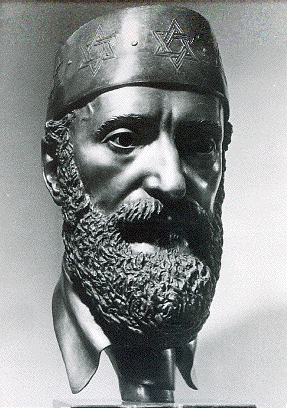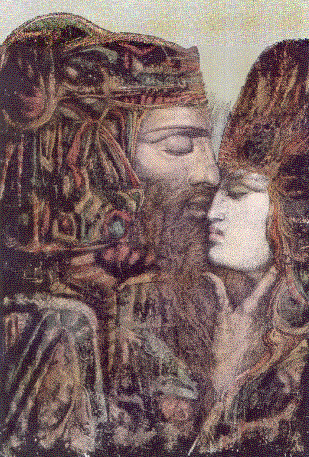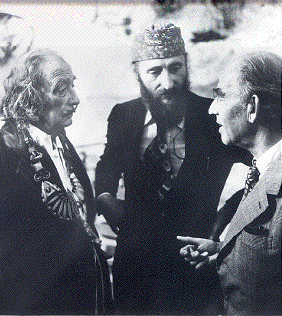
Bronze portrait 'ERNST FUCH' by Arno Breker.
by Phil Psilos with B. John Zavrel,
Founder of the US Museum of European Art, Clarence, New York and Director for International Affairs of the European Art Foundation, Berlin.

Bronze portrait 'ERNST FUCH' by Arno Breker.
In your opinion, what facets of contemporary European art have been most influenced by Vienna School artists (Fuchs, Brauer, Hausner, Hutter)?
The Vienna School of Fantastic Realism, founded in 1946, has not had the influence on the contemporary art which it deserves. The reason is very simple: to work in this tradition, the artist must have great abilities in craftsmanship and painting. And this is hard to find in the art students of the so-called Western world. For decades after the World War II, art academies in Western Europe and in USA have preferred the abstraction in painting.
How can we explain the relative lack of scholarship regarding artists of the Vienna School?
Gifted students in the in the West do not get the opportunity at the official art academies to develop in technical and spiritual ways. Professor Fuchs has been asked many times by young men and women for advice on what to do. Fuchs says: "If I see their high quality drawings and paintings, I usually tell them: do not go to study at one of our modern art academies that are only devoted to the abstraction. The professor mostly knows little, and will spoil your own style. It is a fact that art students in Asia, including China, have better opportunities to reach their goals in art than the art students in the West.

'David and Bethsheba', by Ernst Fuchs.
Can you make any comparisons between the influences of Surrealists and Fantastic Realists on the development of contemporary European Art?
The foundation of Surrealism and Fantastic Realism is the traditional classical art. Salvador Dalí has opened new windows of seeing. Ernst Fuchs, the most widely known member of the Vienna Group, has enabled us by many of his religious and mysterious works to look inside our soul and behind the mirror of human existence. I would like to mention in this connection the late Leonor Fini, with her erotic paintings. She was a close friend and supporter of the young Ernst Fuchs in Paris.

'The Friends of the Golden Triangle' in 1975: Salvador Dalí, Ernst Fuchs and Arno Breker.
What is the value of the Vienna School of Fantastic Realism?
It has a very high value. It shows what an artist can create with mysticism in art in our materialistic century. Ernst Fuchs is the most outstanding artist of this group. This can be proved by his masterful paintings, his intellect and his friendship with the great masters of his time: the surrealistic painter Salvador Dalí and the sculptor Arno Breker. Together, the three artists formed the "Friends of the Golden Triangle". Salvador Dalí proclaimed this extraordinary friendship of these great artists of the 20th century in 1975 in Figueras, Spain. The European Art Foundation, to which I belong, has published catalogs on Fuchs, Dalí, Breker and the Vienna School. Their works are on permanent exhibition at the Museum of European Art in Germany, web site www.europaeische-kultur-stiftung.org
© PROMETHEUS 118/2007
PROMETHEUS, Internet Bulletin - News, Politics, Art and Science. Nr. 118, April 2007